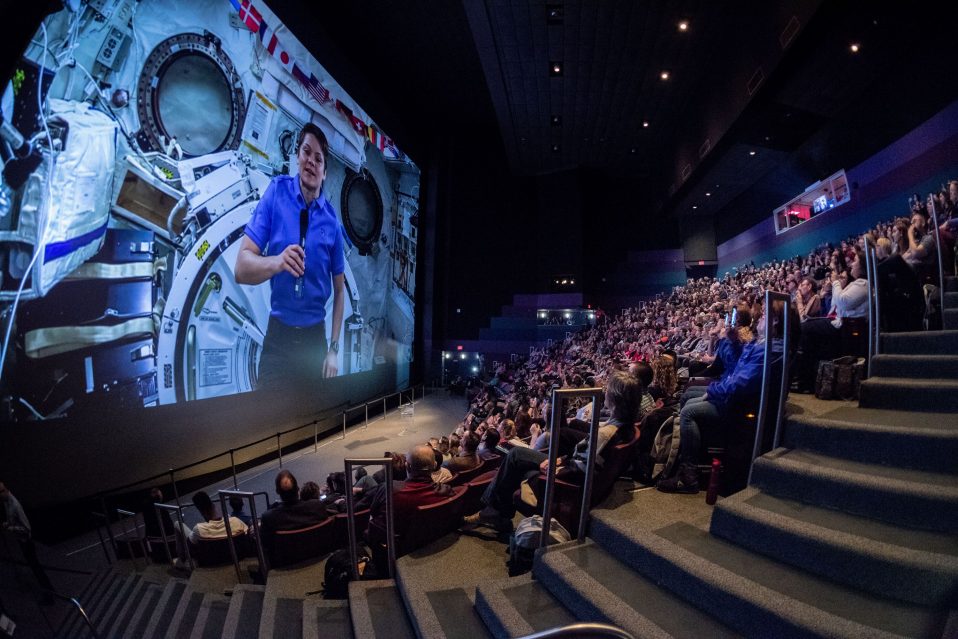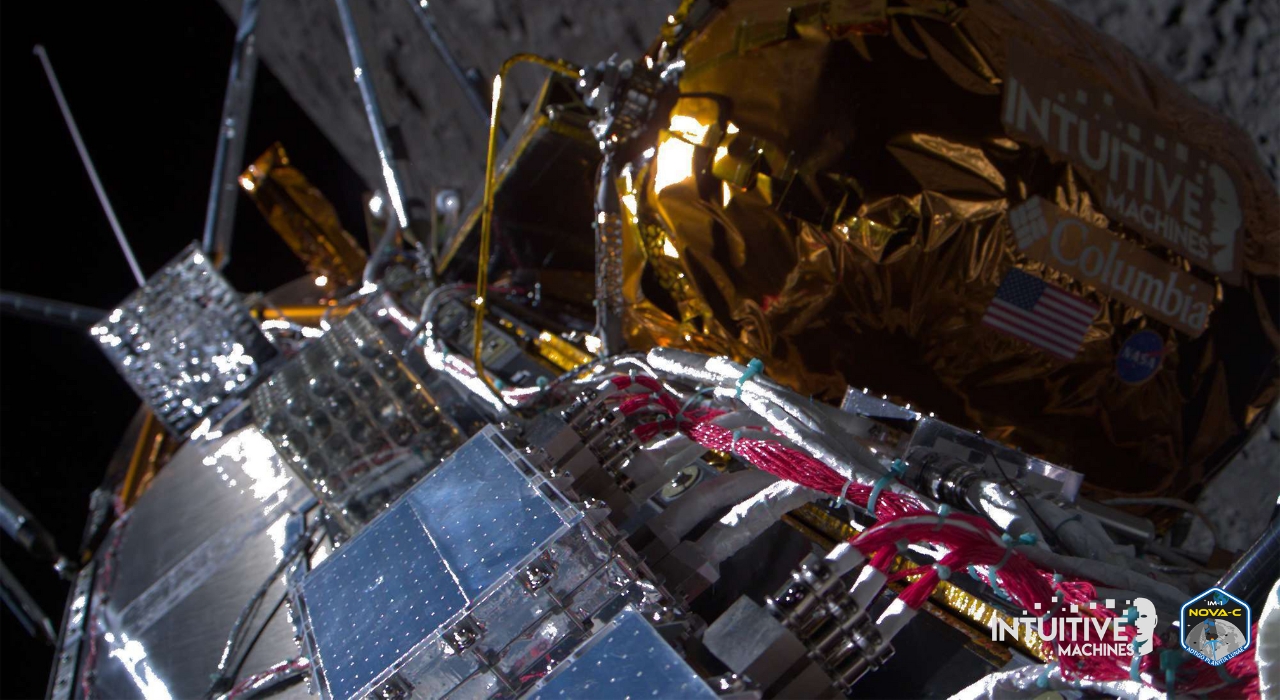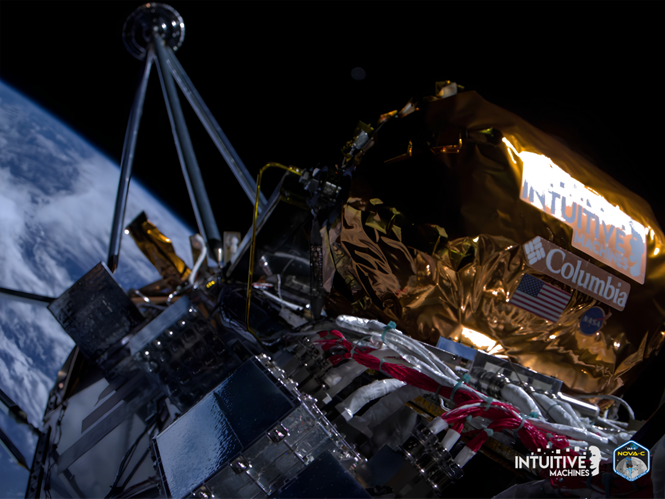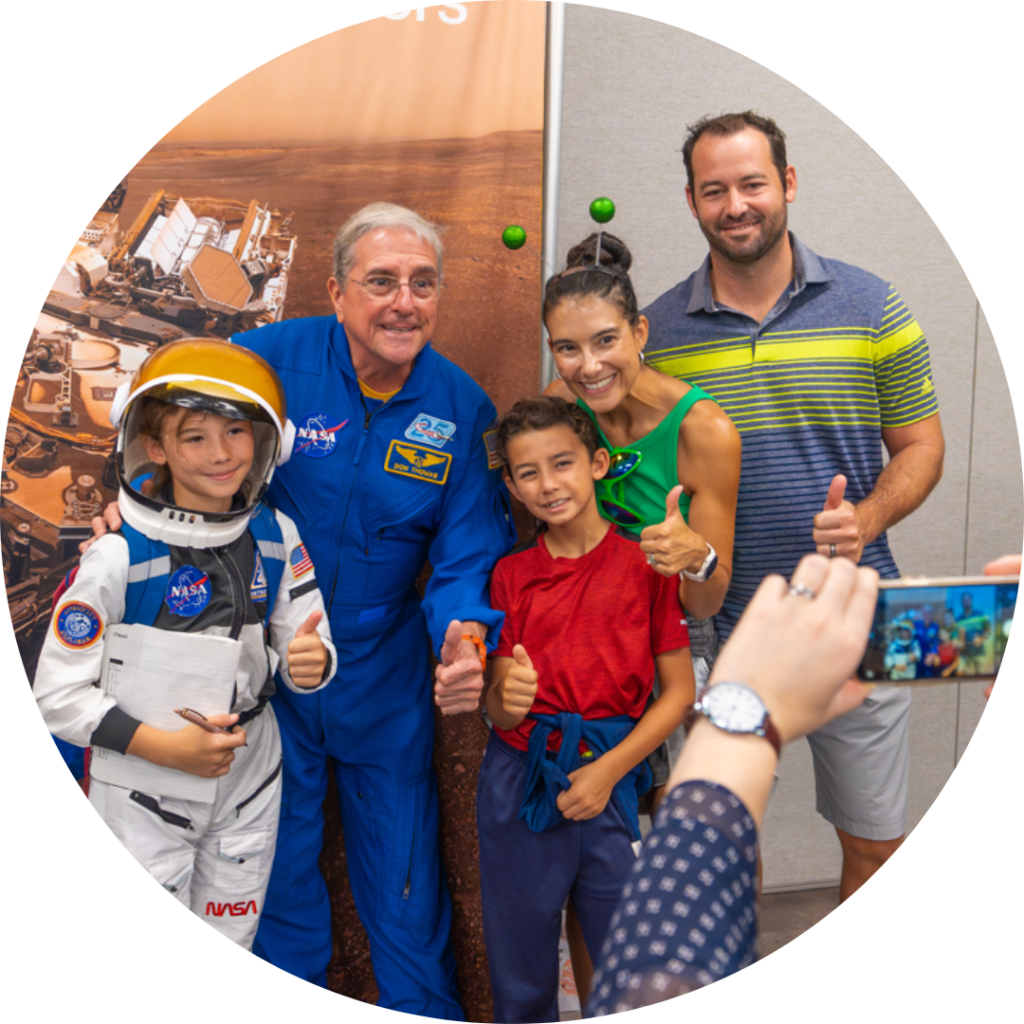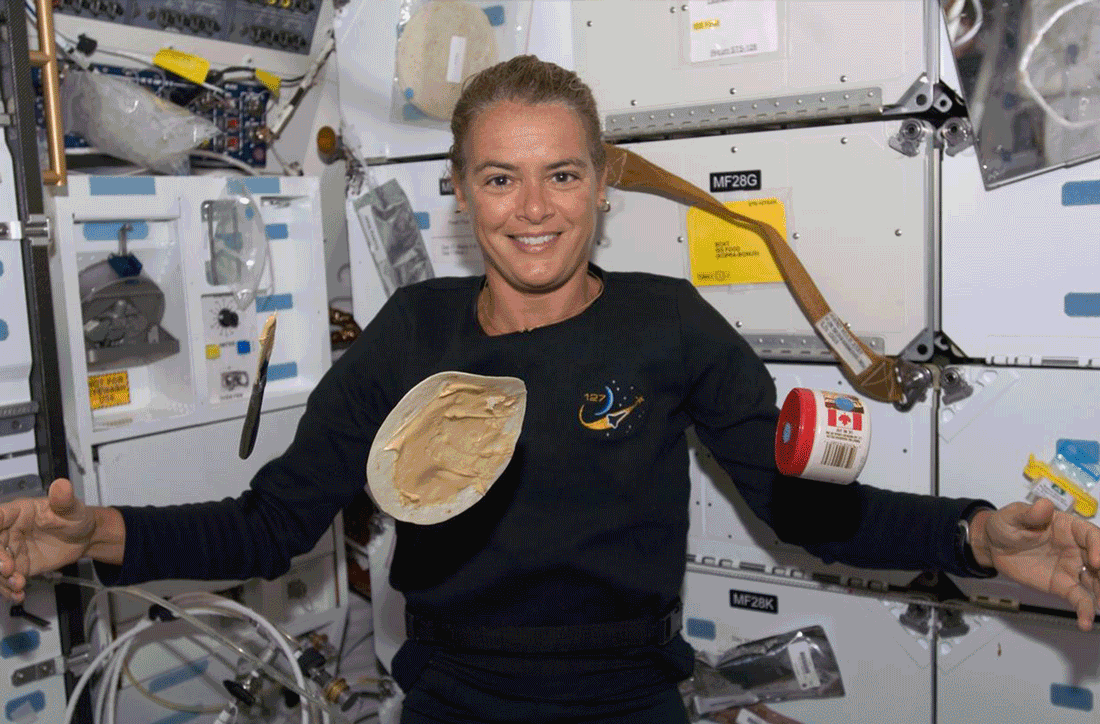
Did you know that tortillas have been a staple aboard the International Space Station (ISS) since 1985? Besides being delicious, tortillas produce fewer crumbs that could float around the station in microgravity compared to bread and other baked goods.
Space food has to be high quality and appetizing for astronauts, which can be a challenge considering their taste buds can change while in orbit due to fluid shifts from weightlessness. The food must also be fairly nonperishable as well as safe and easy to prepare and eat inside the spacecraft where there are limited heating options.
Learn about how space food is created, tested, packaged, delivered and consumed in this blog post.
Creating space food
At the NASA Johnson Space Center (JSC) Space Food Systems Laboratory, food scientists examine a variety of factors to develop space food. Nutrition plays a key role, but flavor, shelf life, and ease of cooking and consumption must all be evaluated.
Scientists develop recipes and sample meals in a test kitchen inside the lab. Some of their equipment includes freeze driers, a 40-gallon steam jacketed kettle, a double convection oven, a six-burner stovetop, a vertical chamber sealer, a canner, and a standing mixer. Once an item has been developed, it is taste tested in a sensory lab to judge flavor.
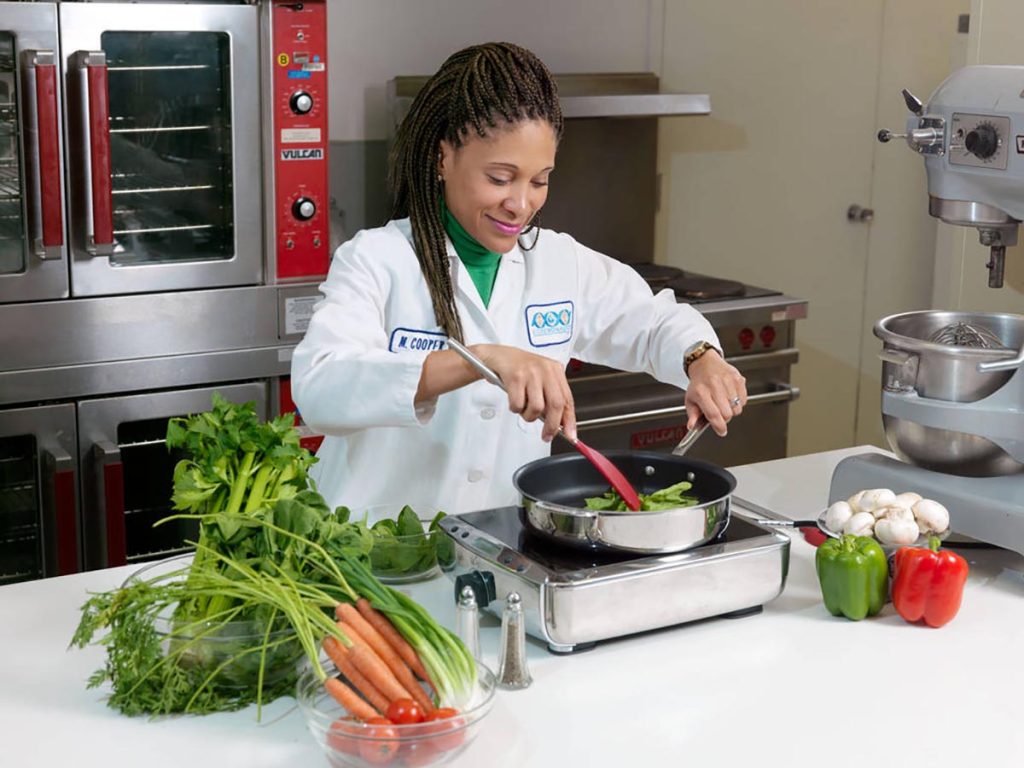
March 2, 2015 – A food scientist with the JSC Space Food Systems Laboratory cooks with fresh vegetables.
Testing space food
ISS crew members taste or sample food items and rate them based upon how well they like them. Then while training in Russia, they repeat the procedure for the Russian food items.
U.S. and Russian dietitians use those ratings to plan menus for each Expedition crew.
Once the menu is compiled, the crews attend a training session in Russia to try the actual menu. The crew makes its final changes, and the menu is finalized before it is packaged.
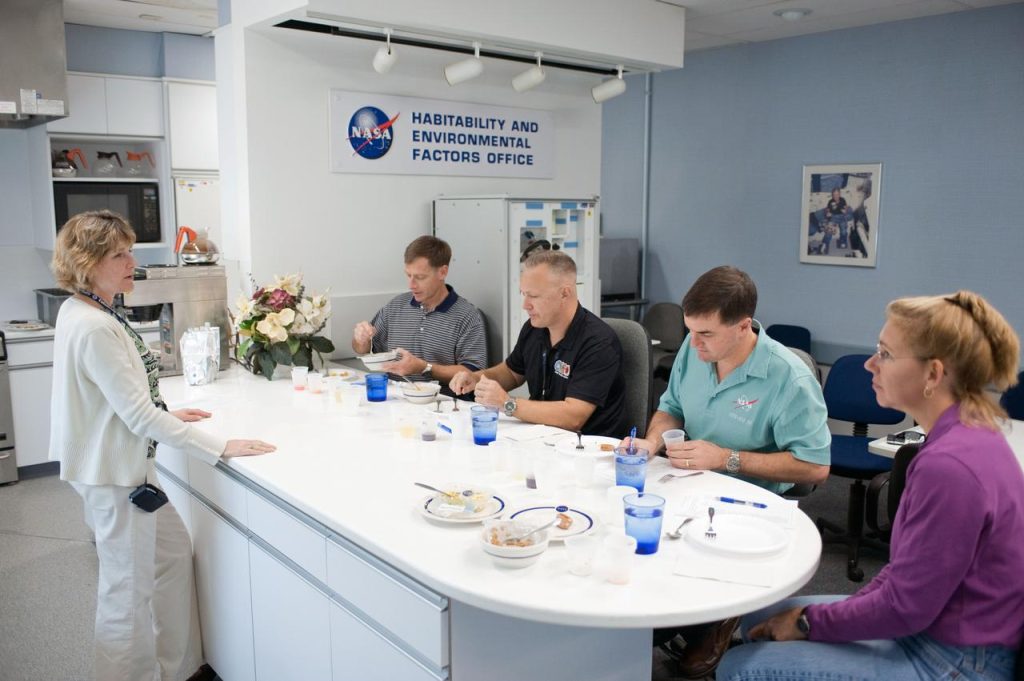
Nov. 10, 2010 – STS-135 crew members participate in a food tasting in the Habitability and Environmental Factors Office at NASA Johnson Space Center.
Packaging space food
To ensure maximum shelf life, much of the food and beverages are dehydrated and individually packaged.
Rehydratable food packages are made from flexible material to aid in trash compression. Foods packaged in rehydratable containers include soups like chicken consommé and cream of mushroom, casseroles like macaroni and cheese and chicken and rice, appetizers like shrimp cocktail, and breakfast foods like scrambled eggs and cereals. Breakfast cereals are prepared by packaging the cereal in a rehydratable package with nonfat dry milk and sugar, if needed.
Thermostabilized foods are food that need to be heat processed to destroy harmful microorganisms and enzymes. Most of the entrees are packaged in flexible retort pouches. This includes products such as beef tips with mushrooms, tomatoes and eggplant, chicken à la king, and ham.
Foods such as nuts, granola bars and cookies are classified as natural form foods. They are ready to eat and packaged in clear, flexible pouches.
Even with all the research and study, it’s difficult to replace the comfort of eating your favorite foods. To provide a taste of home while the astronauts are away, they have the opportunity to bring a few of their personal favorite “off-the-shelf” items. That said, the team still re-packages these items, which often include beverages, cookies, candy and other dried goods.
Delivering space food
For ISS expeditions, the U.S. half of the menu is prepared in Houston and shipped to Florida or Russia depending upon where it is going to be launched. The Russians prepare their half of the menu and launch it on the Progress vehicle. Commercial crews also help deliver cargo to the space station. Click here to read about a recent SpaceX resupply mission.
Once aboard the ISS, most of the food is stored in the Zarya and Node 2 modules.
Eating space food
Space station crew members usually eat breakfast and dinner together. The food preparation area in the Russian Zvezda service module is used to prepare meals.
Once the astronauts are ready for a meal, they rehydrate the food if necessary by adding the required amount of water. The food preparation area contains a fold-down table with built-in food warmers to heat Russian cans and packages. Since the U.S. foods will not fit into the slots in the table, a suitcase-like food warmer is used for food that needs to be heated.
Used packaging is bagged and placed in a Progress vehicle, which is eventually jettisoned and burns up upon re-entry into the Earth’s atmosphere.
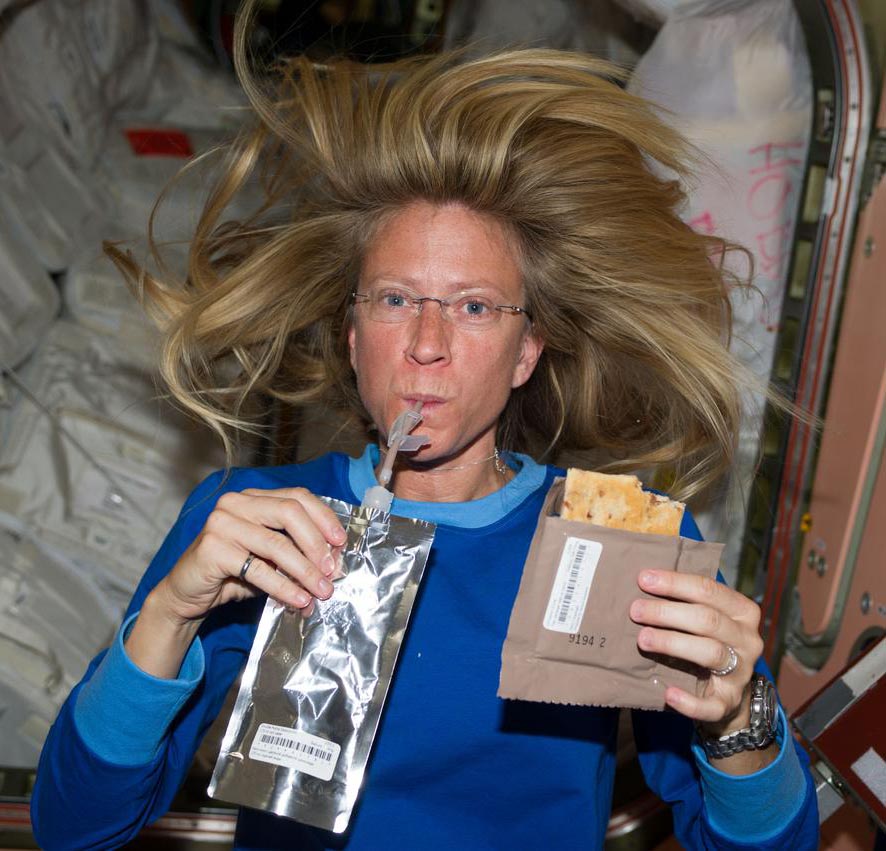
June 3, 2013 – Astronaut Karen Nyberg,Expedition 36 flight engineer,is photographed with food and drink packets while in the Node 1 module.
Space food spinoffs
Food technology spinoffs benefit dining rooms throughout the world. NASA licenses dozens of space-age technologies and connects with the private sector through business-to-business partnerships for the creation of products that improve lives here on Earth. Advancements in food packaging, preservation, preparation and nutrition to meet the challenges of space resulted in many commercial products.
For example, a metallic film first used as a signal-bouncing reflective coating for the Echo 1 communications satellite made way for packaging and protecting food while reducing packaging manufacturers’ costs. The insulation barrier of aluminum-like material laid over a core of Mylar has also insulated and protected components of a number of other spacecraft.
Today the metallic material, sandwiched between layers of plastic, has found its way into a wide variety of food packaging on Earth. Its reflective properties offer insulation and product protection for long periods and is less expensive and more easily machined than aluminum foil.
Deep space missions
NASA’s Advanced Food Technology Project focuses on reducing the mass, volume, and waste of the entire integrated food system to be used during exploration missions. The researchers investigate methods to extend the shelf life and acceptability of food items to as long as five years. Researchers are also actively exploring bioregenerative solutions such as grown vegetables as a component of the overall food system.
Try this at home
Become a scientist at home with your kiddos through this NASA educational activity for third to fifth graders. You only need a few household items to help you select and compare foods for spaceflight suitability, and package them for spaceflight.

